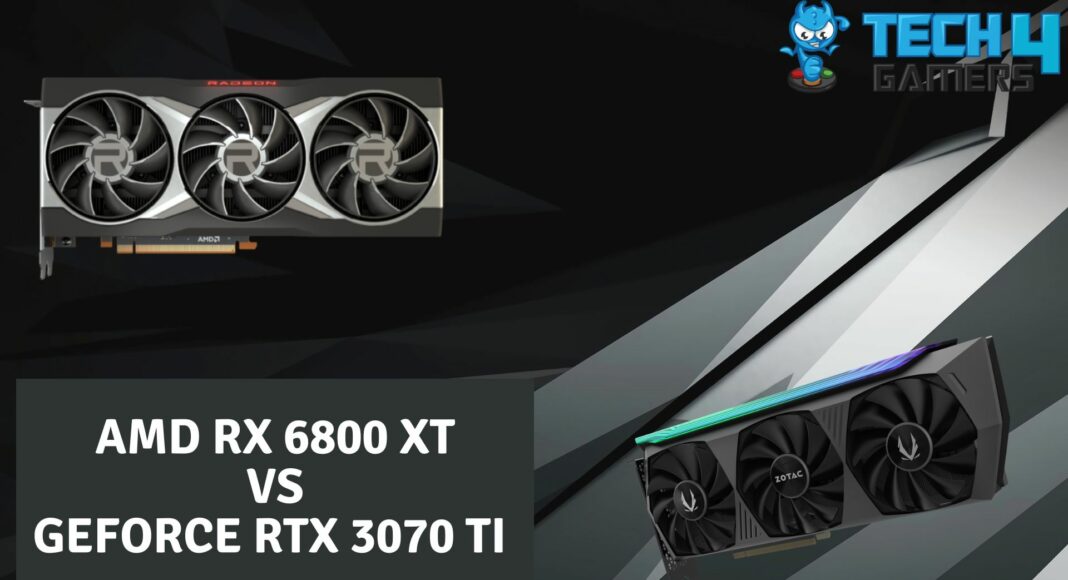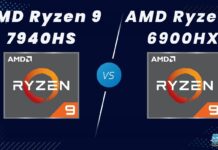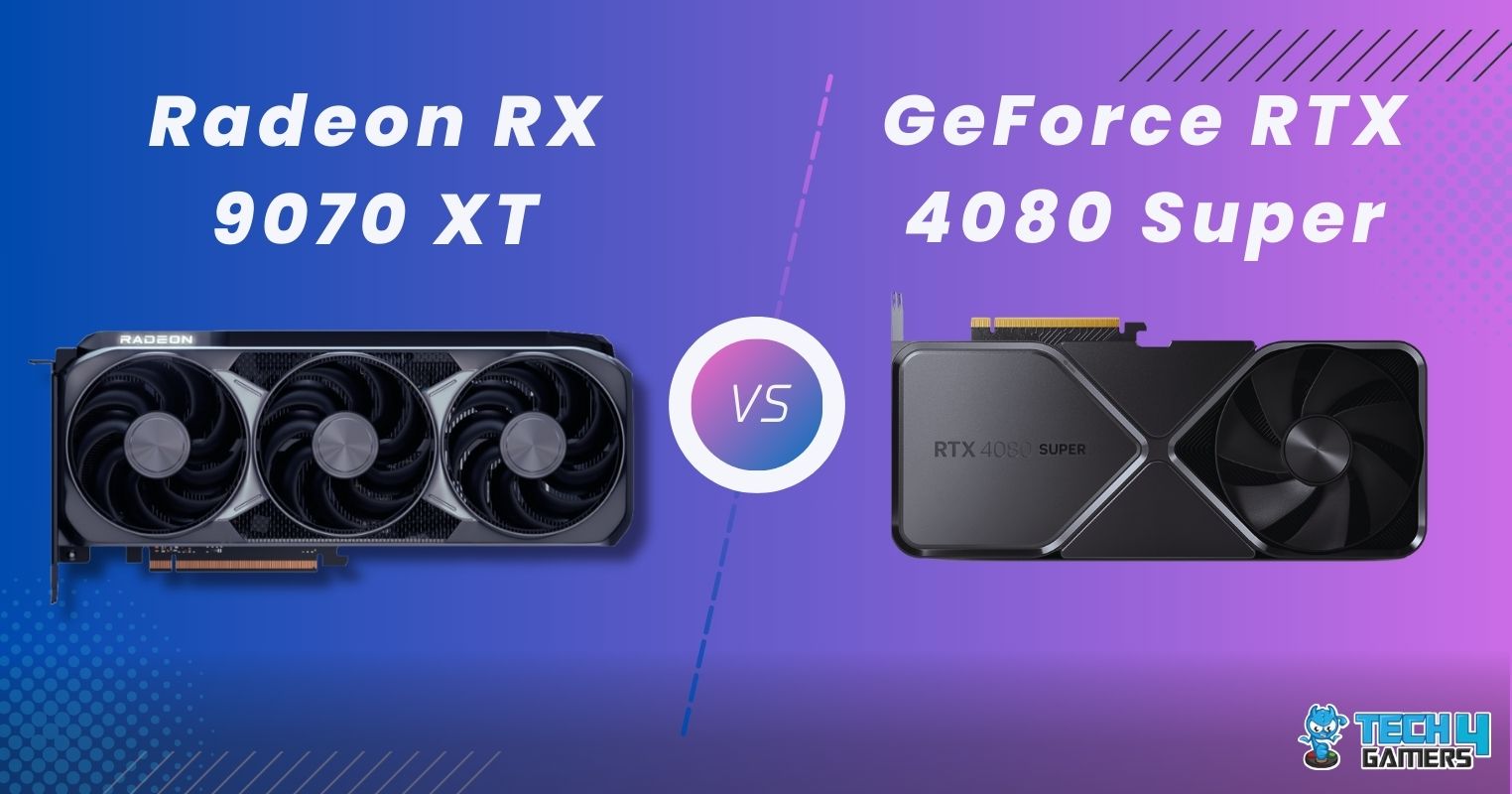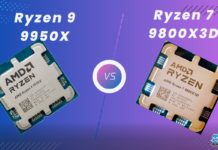Both major GPU manufacturers have made efforts to bring competition back to the tech landscape, and this battle rages the hottest in the mid-range. The RX 6800 XT vs RTX 3070 Ti comparison will detail the fight between these two tech behemoths.
- The average framerate of the RX 6800 XT was around 23% higher than the RTX 3070 Ti in our gaming tests.
- The power consumption of these cards was almost the same in the tests we conducted.
- The price of these cards at the time of writing this comparison approaches the same number.
Comparison Table
| Name | AMD RADEON RX 6800 XT | NVIDIA GeForce RTX 3070 Ti |
|---|---|---|
| Architecture | RDNA 2.0 | Ampere |
| CUDA Cores | 4608 | 6144 |
| RT Cores | 72 | 48 |
| Tensor Cores | - | 192 |
| Power Connector | 2x 8-pin | 1 x 12 pin |
| Launch Year | Oct 28, 2020 | May 31, 2021 |
| MSRP | $649 | $599 |
| GPU Die | Navi 21 | GA104 |
| Memory Bus | 256 bit | 256 bit |
| Interface | PCIe 4.0 x16 | PCIe 4.0 x16 |
| Best Variants | Best RX 6800 XT Graphics Cards | - |
Architectural Differences
- Processing Nodes: The RX 6800 XT makes use of 7nm processing nodes, which are a bit more advanced than the 8nm nodes that the RTX 30-series of graphics cards use.
- Clock Speed: The Radeon card has a base clock of around 1825MHz, whereas the boost clock goes all the way to 2250MHz. In contrast, the RTX 3070 Ti has a base clock of around 1575MHz, while its boost clock is around 1770MHz.
- TDP: The TDP of both these cards are not very far apart. The RX 6800 XT has a rating of around 300 watts, whereas the RTX 3070 Ti has a rating of around 290 watts.
- VRAM: One of the biggest advantages of the RX 6800 XT over the Nvidia card is its 16GB of GDDR6 VRAM. The RTX 3070 Ti, however, uses faster GDDR6X VRAM but a lower quantity of it, around 8GB.
Gaming Benchmarks
Now that we have the details of the specifications of the RX 6800 XT vs RTX 3070 Ti, this part of the comparison will list the performance of these cards in an array of games. To do this, we have formulated a test bench with the components listed below to leave only the graphics cards as the limiting factor.
Test System
- CPU: AMD Ryzen 9 5950X
- Cooler: Arctic Liquid Freezer II 360
- Mobo: Gigabyte X570 AORUS Elite
- RAM: XPG Lancer RGB 32GB 7200MT/s DDR5
- SSD: XPG GAMMIX S70 BLADE 2TB NVMe
- Case: Arctic Liquid Freezer II 420
- PSU: ENERMAX REVOLUTION D.F. X 1050W
- OS: Windows 11
- Resolution: 4K
God of War

- At native resolution in God Of War, the RTX 3070 Ti had an average framerate of around 62 FPS, while the RX 6800 XT had a framerate of around 70 FPS. This kicks our comparison tests off with a 13% advantage for the Radeon card.
- The 1% lows fell below the ideal numbers for both cards. The RTX 3070 Ti experienced lows of around 53 FPS, whereas the RX 6800 XT hovered around a minimum of around 58 FPS.
Guardians of the Galaxy

- When we tested Guardians of The Galaxy, the RTX 3070 Ti had an average framerate of around 76 FPS, which is 17% lower than the RX 6800 XT’s average of around 89 FPS.
- The 1% lows were around 62 FPS on the RTX 3070 Ti, whereas the AMD card had a minimum framerate closer to 79 FPS.
Forza Horizon 5

- The gains of the AMD card were exaggerated in our test of Forza Horizon 5, with an average framerate of 93 FPS, around 35% higher than the 69 FPS average of the 3070 Ti.
- Minimums hovered around a framerate of 75 FPS on the 6800 XT, whereas the Nvidia card had lows closer to 56 FPS.
Cyberpunk 2077

- Both cards were brought to their knees when we played Cyberpunk 2077 with maxed-out graphics. The RTX 3070 Ti had an average framerate of around 26 FPS, while the RX 6800 XT spat out an average of around 29 FPS. This resulted in a less graceful 11% victory for the Radeon card.
- The 1% lows were around 20 FPS for the RTX card, whereas the 6800 XT maintained minimums of around 22 FPS.
Red Dead Redemption 2

- The RTX 3070 Ti averaged a framerate of 63 FPS when we tested RDR 2 with all the settings cranked to the max, while the Radeon card had an average framerate of close to 75 FPS. The difference in framerate was around 20% in this title.
- The 1% lows dipped below 60 frames on the RTX card, with minimums of around 52 FPS, which is noticeably lower than the 62 FPS dips that the 6800 XT provided.
Horizon Zero Dawn

- The RTX 3070 Ti had an average framerate of 76 FPS in Horizon Zero Dawn, whereas the 99 FPS average of the RX 6800 XT ended our gaming benchmarks with a 23% advantage for the Radeon.
- As for the 1% lows in our final game, the RTX 3070 Ti dropped close to 63 FPS, whereas the AMD card edged closer to 85 FPS.
Overall Gaming Performance

Now that we have the per-game performance of the RTX 3070 Ti vs RX 6800 XT, this part of the subsequent part of comparison will take a step back to look at the average performance of these cards.
Starting with the averages, the framerate of the RTX 3070 Ti was around 62 FPS across the 6 games we tested, whereas the RX 6800 XT had an average of around 22% higher at around 76 FPS. The RX 6800 XT was much more responsive than the RTX 3070 Ti on average, making it much of adept at playing games at 4k.
The lows were around 51 FPS on the RTX 3070 Ti, whereas the RX 6800 XT had minimums of around 63 FPS. The Radeon card stayed above 60 FPS on average, making the difference between the two immediately noticeable.
Power Consumption

On average, the RTX 3070 Ti took around 273 watts of power, whereas the RX 6800 XT was only a little bit more power-hungry, with an average power draw of around 276 watts. The power draw between the two cards was not different enough to be a deciding factor.
Price And Availability
At the time of updating this comparison, the lowest price, RTX 3070 Ti, is listed at around $500, whereas the lowest price, RX 6800 XT, is $490. You can get both cards for much cheaper on the used market.
What We Recommend
Now that we have a point of reference to judge these cards, this part of the RTX 3070 Ti vs RX 6800 XT comparison will detail the winner of this comparison.
For the same price, with the same power consumption, the RX 6800 XT pushes out around 20% more frames than the RTX 3070 Ti. This leaves no point for the RTX card to defend itself, except maybe for ray tracing gaming. Still, we would have to say that most gamers would enjoy the benefits of getting an RX 6800 XT more than the benefits of getting an RTX 3070 Ti.
Pros And Cons
| GPU | Pros | Cons |
|---|---|---|
| RTX 3070 Ti | ✅Better ray tracing performance ✅Relatively low price | ❌Lower gaming performance |
| RX 6800 XT | ✅Relatively low price ✅Higher gaming performance | ❌Slightly higher power consumption |
More From RTX 3070 Ti
Thank you! Please share your positive feedback. 🔋
How could we improve this post? Please Help us. 😔
[Comparisons Expert]
Abdemanaf is a skilled creative writer who has been honing his craft since 2011. While initially working in different fields, he found a passion for technology and has been exploring the tech world since early 2015. Over the years, he has developed an in-depth knowledge of the latest tech trends and product offerings by various companies.
Abdemanaf’s writing reflects his analytical mindset and ability to think critically. He has a knack for breaking down complex technical information into easily digestible pieces, making his articles engaging and accessible to readers from all backgrounds. In February 2022, he joined Tech4Gamers as a blog and product comparison writer, where he has been able to hone his skills further.
As a writer, Abdemanaf is dedicated to staying up-to-date with the latest technological advancements and trends, enabling him to provide readers with the most relevant and accurate information. He is always eager to learn more and is constantly seeking new challenges to improve his skills.
Get In Touch: manaf@tech4gamers.com



![AIO Vs Custom Loop Liquid Cooling [Explained] AIO vs Custom Loop Liquid Cooling](https://tech4gamers.com/wp-content/uploads/2022/11/AIO-vs-Custom-Loop-Liquid-Cooling-218x150.jpg)



![Intel i9-12900K Vs. i9-12900KS [6 Games Tested]](https://tech4gamers.com/wp-content/uploads/2022/06/CPU-Comparison-Template-NEW-1-218x150.jpg)
Feedback By: